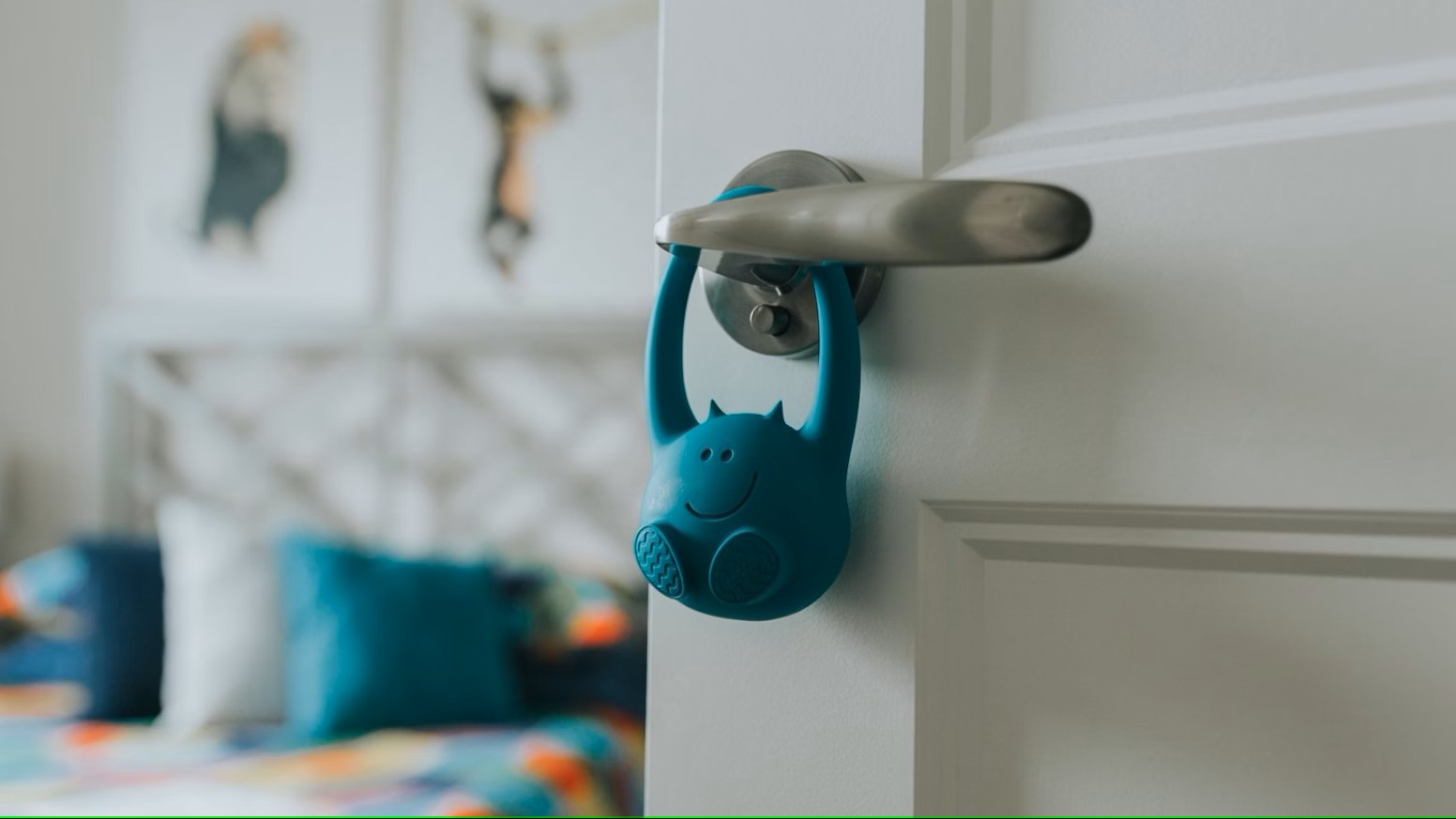Home>Furniture>Bedroom Furniture>How To Keep A Toddler In Bed


Bedroom Furniture
How To Keep A Toddler In Bed
Modified: January 6, 2024
Discover effective strategies for keeping your toddler in bed with the right bedroom furniture. Create a peaceful sleep environment for your child.
(Many of the links in this article redirect to a specific reviewed product. Your purchase of these products through affiliate links helps to generate commission for Storables.com, at no extra cost. Learn more)
Introduction
Welcome to the world of toddler sleep! If you’re a parent of a toddler, you know that getting them to stay in bed and sleep through the night can sometimes feel like an impossible task. From bedtime battles to nighttime wakings, it can be challenging to establish a solid sleep routine for your little one.
But fear not! In this article, we will provide you with practical tips and strategies to help keep your toddler in bed and promote healthier sleep habits. By understanding their sleep patterns, creating a bedtime routine, and addressing common sleep challenges, you can make bedtime a more peaceful and restful experience for both you and your child.
So, let’s dive in and explore the world of toddler sleep together!
Key Takeaways:
- Establish a consistent bedtime routine to signal to your toddler that it’s time to relax and transition to sleep, creating a peaceful atmosphere for restful nights.
- By understanding your toddler’s sleep patterns, creating a calming sleep environment, and addressing common sleep challenges, you can promote healthier sleep habits and keep your little one in bed.
Read more: What Size Is A Toddler Bed
Understanding Toddler Sleep Patterns
Before we delve into strategies for keeping your toddler in bed, it’s important to have a good grasp of their sleep patterns. Understanding their sleep needs and behaviors will help you establish realistic expectations and tailor your approach accordingly.
Toddlers typically need around 10 to 14 hours of sleep each day, including naps. However, individual needs may vary. Some toddlers may require slightly less sleep, while others may need more. It’s important to observe your child’s behavior and adjust their sleep schedule accordingly.
During the toddler stage, your child is likely transitioning from two naps to one nap per day. This usually happens around 18 months to 2 years of age. You may notice that their naps become shorter or that they resist taking naps altogether. This is normal as their sleep patterns change.
Another common behavior is bedtime resistance. Toddlers are known for their independence streak, and bedtime can become a battleground. They may stall, request extra stories or drinks of water, or express a sudden burst of energy right when it’s time to sleep.
Additionally, night waking can become more frequent during the toddler years. Your child may wake up crying or calling out for you. Night wakings can be caused by a variety of reasons, including hunger, discomfort, or simply a need for reassurance.
By understanding these sleep patterns, you can adjust your expectations and develop a personalized approach to encourage healthier sleep habits for your toddler. Let’s move on to the next section to learn how to create a bedtime routine that promotes better sleep.
Creating a Bedtime Routine
A consistent bedtime routine is key to helping your toddler wind down and prepare for sleep. By establishing a predictable sequence of activities, you can signal to your child that it’s time to relax and transition to sleep. Here are some tips for creating an effective bedtime routine:
- Set a consistent bedtime: Determine a suitable bedtime for your toddler based on their age and individual sleep needs. Aim for a window of time, such as 7:30-8:00 pm, and stick to it as closely as possible.
- Start winding down early: Begin the bedtime routine about 30 minutes to an hour before the desired sleep time. This allows your child to gradually transition from active play to a state of calmness.
- Choose relaxing activities: Engage in calm and soothing activities during the bedtime routine. This could include reading a bedtime story, taking a warm bath, or listening to soft music.
- Limit screen time: Avoid screens (such as TVs, tablets, and phones) in the hour leading up to bedtime. The blue light emitted by screens can interfere with the production of melatonin, a hormone that regulates sleep.
- Stick to a routine: Consistency is key. Try to follow the same sequence of activities every night to create a sense of familiarity and predictability for your child.
- Provide comfort and security: Make sure your child’s sleep environment is comfortable and conducive to restful sleep. Ensure their room is dark, quiet, and at a comfortable temperature.
Remember, the purpose of a bedtime routine is to help your toddler relax and signal that it’s time for sleep. By consistently following a routine, you can help them transition more easily and smoothly to bedtime.
In the next section, we will discuss how to establish a relaxing sleep environment to further promote better sleep for your little one.
Establishing a Relaxing Sleep Environment
The sleep environment plays a crucial role in promoting restful sleep for your toddler. Creating a calm and soothing atmosphere can help them feel secure and comfortable, making it easier for them to fall asleep and stay in bed throughout the night. Here are some tips for establishing a relaxing sleep environment:
- Darkness: Make sure your child’s room is dark during sleep time. Consider using blackout curtains or blinds to block out any external light that may disrupt their sleep. Nightlights can provide a sense of security and help alleviate fear of the dark.
- Noise control: Minimize noise levels in your toddler’s sleep environment. Use white noise machines or soothing sounds, like gentle lullabies or nature sounds, to create a peaceful ambiance that can drown out any disruptive noises from outside the room.
- Comfortable bedding: Ensure your child’s mattress, pillows, and bedding are comfortable and supportive. Use breathable materials to regulate temperature and provide optimal comfort. Avoid bulky pillows or excessive blankets that may obstruct their breathing and movement during sleep.
- Safety precautions: Take necessary safety measures to childproof the bedroom. Secure furniture to the wall to prevent tipping, cover outlets, and remove any hazards that could potentially harm your child.
- Cut down on distractions: Remove toys, electronic devices, and other stimulating items from the sleep environment. These can be tempting and may distract your child from falling asleep and staying in bed.
- Aromatherapy: Consider using soothing scents, such as lavender, to create a relaxing atmosphere. Use essential oil diffusers or mild room sprays, keeping in mind to choose child-friendly and safe options.
A comfortable and calming sleep environment can significantly contribute to your toddler’s ability to fall asleep and stay in bed. Experiment with different elements and adjust as needed to create an environment that promotes relaxation and restful sleep.
In the next section, we will address common sleep challenges that parents often face with their toddlers and provide tips on how to handle them effectively.
Addressing Common Sleep Challenges
Every parent experiences sleep challenges with their toddler at some point. From bedtime resistance to frequent night waking, these issues can disrupt both your child’s sleep and your own. Here are some common sleep challenges and strategies to help address them:
- Bedtime resistance: If your toddler protests going to bed, establish a consistent bedtime routine and communicate clear expectations. Offer choices within limits, such as allowing them to choose their pajamas or a bedtime story. Stay calm and firm, gently guiding them back to bed if they try to leave.
- Night wakings: When your toddler wakes up during the night, respond with reassurance and comfort. Avoid engaging in stimulating activities or excessive interaction. Provide a brief hug or pat on the back, use a soothing voice, and gently encourage them to go back to sleep.
- Separation anxiety: Separation anxiety is common in toddlers and may cause sleep disruptions. Help ease their anxiety by establishing a secure bedtime routine and offering a transitional object, such as a favorite stuffed animal or blanket, for comfort. Practice gradual separation during waking hours to build their confidence.
- Transitioning from crib to bed: Moving from a crib to a bed can be a big change for your toddler. Involve them in the process by allowing them to choose their new bed or bedding. Create a sense of excitement and make sure to establish clear expectations for staying in bed during the night.
- Regression during developmental milestones: Sleep disruptions may occur during periods of rapid development, such as learning to walk or language acquisition. Be patient and understanding during these times, providing extra comfort and support as needed.
- Nap challenges: As your toddler transitions to one nap per day, you may encounter nap resistance or shorter naps. Stick to a consistent nap schedule and create a quiet and comfortable environment for naps. Introduce soothing pre-nap routines to help your child wind down.
Remember that each child is unique, and what works for one may not work for another. Stay attuned to your toddler’s cues, be patient, and remain consistent in your approach. With time and patience, you can overcome common sleep challenges and promote healthier sleep patterns.
In the next section, we will discuss how to handle bedtime resistance effectively to ensure a smoother transition to sleep.
Establish a consistent bedtime routine and stick to it. This can include activities like reading a book, singing a lullaby, or giving a warm bath. Consistency will help signal to your toddler that it’s time for bed.
Read more: When To Transition To A Toddler Bed
Dealing with Bedtime Resistance
Bedtime resistance is a common challenge that many parents face when trying to put their toddler to bed. Your little one may try to stall, resist sleep, or become hyperactive right when it’s time to wind down. Here are some strategies to help you deal with bedtime resistance effectively:
- Establish a consistent bedtime routine: Having a predictable and soothing routine sends signals to your toddler that it is time to start winding down and getting ready for sleep. Be consistent with the sequence of activities and the timing of the routine to create a sense of structure.
- Set clear expectations: Communicate with your child about what is expected at bedtime. Let them know it’s time to go to bed, be firm but gentle, and avoid negotiating or giving in to requests that may prolong the bedtime routine.
- Provide comfort and reassurance: Some children resist bedtime because they may fear being alone or have separation anxiety. Offer reassurance and comfort by staying with them for a few minutes, reading a bedtime story, or using a nightlight to help them feel secure.
- Use positive reinforcement: Create a reward system for staying in bed and falling asleep independently. Offer praise and small rewards, such as stickers or a special bedtime activity, to motivate your toddler to cooperate.
- Adjust the bedtime routine: Pay attention to the timing of your toddler’s activities leading up to bedtime. Avoid stimulating activities or screen time close to bedtime, as these can interfere with their ability to wind down and fall asleep. Instead, incorporate calming activities such as reading or gentle stretching.
- Stick to a consistent sleep schedule: Consistency is key when it comes to bedtime resistance. Maintain a consistent wake-up time in the morning, even on weekends, to regulate your child’s body clock and establish a consistent sleep pattern.
Remember, it’s normal for toddlers to test boundaries and resist bedtime from time to time. By staying patient, consistent, and calm, you can help them understand that bedtime is non-negotiable while creating a peaceful atmosphere for sleep.
In the next section, we will discuss strategies for encouraging independence during sleep and reducing dependency on external assistance.
Encouraging Independence
Encouraging independence during sleep is important for your toddler’s sleep development and overall self-sufficiency. By helping them learn to fall asleep and stay in bed independently, you can promote healthier sleep habits. Here are some strategies to encourage independence:
- Establish a soothing bedtime routine: A consistent bedtime routine helps signal to your toddler that it’s time to wind down and prepare for sleep. Include activities that promote relaxation, such as reading a book or listening to calming music, so they become drowsy and more self-reliant.
- Teach self-soothing techniques: Encourage your child to develop self-soothing skills that allow them to calm themselves to sleep. This may include strategies like hugging a favorite stuffed animal, taking deep breaths, or repeating a calming phrase.
- Gradual separation: If your toddler is used to falling asleep with your presence, gradually decrease your involvement over time. Start by sitting near their bed, then move further away each night until they can fall asleep independently. This helps them build confidence and learn to self-settle.
- Use praise and rewards: Celebrate and praise your child when they demonstrate independence during sleep. Offer small incentives such as stickers or a special reward chart to motivate and reinforce their efforts to sleep independently.
- Stay consistent during nighttime wakings: If your toddler wakes up during the night, respond calmly and briefly reassure them, but avoid engaging in play or providing unnecessary attention. Encourage them to go back to sleep on their own, as this helps develop their ability to self-soothe and fall back asleep independently.
- Be patient: Encouraging independence takes time and consistency. Your child may resist at first or require additional reassurance, but with patience and perseverance, they will gradually develop the self-assurance and skills needed for independent sleep.
Remember, every child is different, and it may take time for your toddler to become comfortable with independent sleep. Be supportive, offer reassurance, and celebrate their progress along the way.
In the next section, we will discuss strategies for handling nighttime wakings effectively to ensure a smoother transition back to sleep.
Handling Nighttime Wakings
Nighttime wakings are a common occurrence for toddlers and can disrupt both their sleep and yours. It’s important to handle these wakings effectively to help your child quickly settle back to sleep. Here are some strategies for handling nighttime wakings:
- First, assess their needs: When your toddler wakes up during the night, determine if there is a specific need that needs to be addressed. Check if they are hungry, thirsty, or need a diaper change. Tenderly address these needs while keeping the environment calm and soothing.
- Use a gentle approach: When responding to nighttime wakings, use a calm and gentle voice. Offer reassurance, comfort, and affection to let your child know you are there to support them. Keep the interaction minimal to avoid overstimulation.
- Avoid excessive stimulation: Resist the urge to engage in active play or turn on bright lights during nighttime wakings. Keep the environment dimly lit, speak softly, and encourage your toddler to relax and settle back to sleep.
- Encourage self-soothing: Help your toddler develop self-soothing skills by gently encouraging them to soothe themselves back to sleep. Offer a comforting touch or a favorite stuffed animal, and give them space to practice calming themselves down.
- Stay consistent: Be consistent in your response to nighttime wakings. Use the same approach each time to help your toddler understand the expectations and establish a routine. This consistency will reinforce their understanding that nighttime is for sleep.
- Gradually reduce assistance: If your toddler requires your presence to fall back asleep, gradually reduce your involvement over time. Start by slowly decreasing the amount of time you spend with them until they can settle back to sleep independently.
It’s normal for toddlers to have nighttime wakings, and it may take time for them to develop the ability to self-settle and sleep through the night consistently. Remember to stay patient, provide reassurance, and offer support as they navigate the journey to more independent sleep.
In the final section, we will discuss how to cope with the transition from a crib to a bed, which can present its own set of sleep challenges.
Coping with Transition from Crib to Bed
The transition from a crib to a bed is a significant milestone for your toddler. While it opens up a new sense of freedom, it can also bring about sleep challenges. Here are some tips to help you cope with the transition and promote better sleep:
- Choose the right time: Consider your child’s age, developmental readiness, and any external factors when deciding to transition from a crib to a bed. It’s generally recommended to make the switch between the ages of 2 and 3.
- Involve your child: Make your toddler feel involved in the process by letting them choose their new bed or bedding. This will help them feel a sense of ownership and excitement about the transition.
- Gradual transition: Ease into the transition by initially placing the new bed in the same room as the crib. Allow your child to spend some play or quiet time on the bed during the day to become familiar with it.
- Establish new sleep routines: With the transition, it’s important to establish new sleep routines. Stick to a consistent bedtime routine, including a calm and soothing pre-bedtime ritual, to help your toddler settle into their new sleep environment.
- Provide comfort and reassurance: The move from a crib to a bed can be unsettling for your toddler. Offer comfort and reassurance by ensuring their sleep space is cozy and familiar. Allow them to bring a favorite stuffed animal or blanket to provide additional comfort.
- Set clear boundaries: Clearly communicate the expectations around staying in bed. Let your child know that they are to stay in their bed throughout the night. Be consistent and gently guide them back to their bed if they try to wander.
- Be patient with the adjustment: Understand that it might take some time for your child to adjust to the new sleeping arrangement. Be patient and supportive as they adapt to the change.
By implementing these strategies, you can support your toddler through the transition from a crib to a bed and foster a smoother sleep experience. Remember that each child is unique, and they may require differing amounts of support and time to adjust to the change.
Now that we have explored strategies for various sleep challenges and transitions, let’s wrap up this article.
Read more: How To Convert A Crib Into A Toddler Bed
Conclusion
Bedtime can often be a challenging and frustrating time for parents of toddlers. However, by understanding their sleep patterns, creating a consistent bedtime routine, establishing a relaxing sleep environment, addressing common sleep challenges, encouraging independence, and handling nighttime wakings effectively, you can help keep your toddler in bed and promote healthier sleep habits.
Remember that each child is unique, and what works for one may not work for another. It’s important to be patient, flexible, and understanding as you navigate the world of toddler sleep. Keep in mind that sleep habits take time to develop and may require some trial and error to find what works best for your child.
By creating a calm and soothing bedtime routine, providing a comfortable sleep environment, and offering reassurance and support during nighttime wakings, you can help your toddler develop good sleep habits that will benefit them for years to come.
Transitions, such as moving from a crib to a bed, may bring additional sleep challenges. However, by involving your child, gradually introducing the change, and maintaining clear boundaries, you can navigate the transition more smoothly.
Remember to also take care of yourself as a parent. Prioritize sleep for both you and your child, as well-rested parents are better equipped to handle the challenges that may arise during the bedtime routine and nighttime wakings.
With patience, consistency, and a focus on creating a positive sleep environment, you can help your toddler develop healthy sleep habits and enjoy restful nights for the whole family.
Frequently Asked Questions about How To Keep A Toddler In Bed
Was this page helpful?
At Storables.com, we guarantee accurate and reliable information. Our content, validated by Expert Board Contributors, is crafted following stringent Editorial Policies. We're committed to providing you with well-researched, expert-backed insights for all your informational needs.













